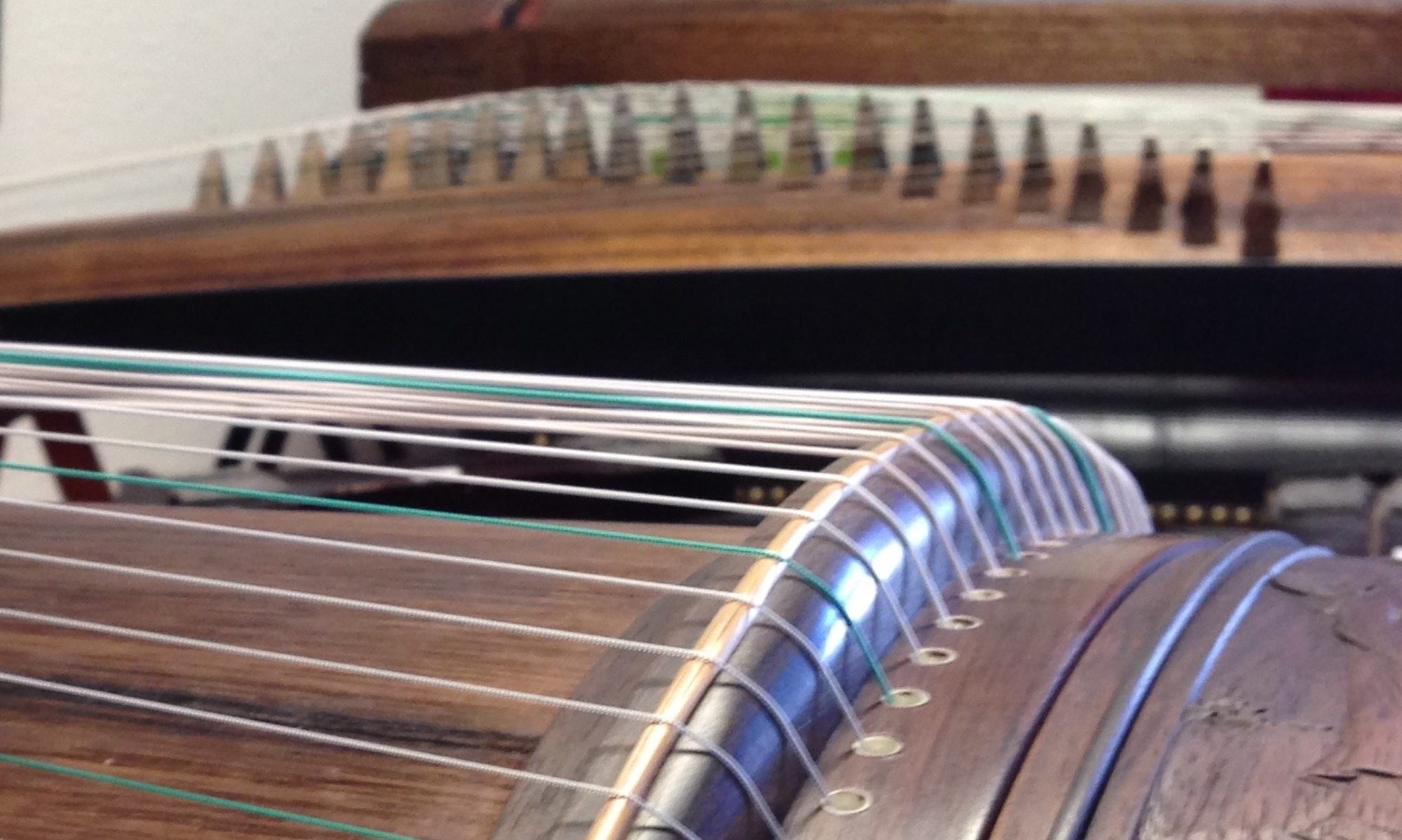A Brief Introduction On the Guzheng – by Bei Bei (Founder at The Guzheng Shop)
History of the Guzheng
The original name for Guzheng 古筝 (pronounced goo-jung) is Zheng 筝 (pronounced jung). It is a multi-stringed instrument with movable bridges under each string. Zheng became popular in Qin (a state in ancient China) during the Warring State Period, 475-221 B.C. (Jin, 1991). The predecessors of the Zheng are Qin (also known as Guqin) and Se (also known as Guse), which are stringed-instruments with similarities to the Zheng. The Chinese word “Gu” (古) means “ancient”. Modern Chinese people added “Gu” before the word “Zheng” to express that this instrument is from ancient times. Nowadays, the name “Guzheng” is more commonly known to people both in China and worldwide. Therefore, I will also address the instrument by this name in this article instead of the original Zheng.


The Guzheng and Guqin are considered two types of Chinese zither instruments by Westerners. Although the Chinese Se is no longer being produced and played, the Japanese Koto, Korean Gayageum, Vietnamese Dan Tranh, and Mongolia Yatga are still popular sister instruments of the Guzheng in the Asian long-zither family. People believe that these instruments originated from the Guzheng, especially the thirteen-stringed Japanese Koto, which preserves the shape and form, playing techniques, as well as some repertoire of the Guzheng from the Tang Dynasty (618-907AD) when it was first introduced to Japan by Japanese envoys who visited China (Jin, 1991) (Sun & He, 1991).
The Guzheng was used in both court and folk music in ancient China. Recent evidence shows that the ancient Guzheng had only five strings, but sometime later, that number increased to between twelve and sixteen strings (Jin, 1991). Today, modern Guzhengs have a variety of strings ranging from eighteen to twenty-seven (and sometimes more). Unlike the ancient Guzheng with its strings made of silk, the modern eighteen-stringed Guzheng has steel strings and is known as the Steel-Stringed Zheng. Its tonal quality can be characterized as sharp, metallic, and twangy. This type of Guzheng is mostly used for playing traditional folk music, especially for playing repertoire from Southern Chinese folk styles such as Guangdong (Canton), Chaozhou, and Kejia (Hakka). With the exception of the Steel-Stringed Zheng, other modern Guzhengs have strings made of steel on the inside with nylon and plastic wrapped outside. They sound warmer and mellower compared to the Steel-Stringed Zheng.

Nowadays, the most common type is the twenty-one-stringed Guzheng. It is tuned to four pentatonic octaves by default. For example, in the standard D major pentatonic scale tuning, the notes are D, E, F#, A and B from low to high pitch. The scale repeats four times, and there is an extra D note in the highest octave. Modern Guzheng music is mostly written in the keys of D major/B minor, G major/E minor, and C major/A minor. Songs are rarely written in the key F major/D minor and A major/F# minor, and even when they are, players often choose to substitute them by playing the piece in the nearest key – G major/E minor. The rest of the keys in the Western 12-Keys system are used only occasionally due to the complexity of tuning changes required from the common keys.
Despite its limitation in key usages, the Guzheng has great flexibility for non-standard tunings because of its movable bridges and easy-access tuning pin for each string. As seen in many modern compositions, notes outside of the scales are being used and new tonal modes are being formed by non-standard tunings. For example, “Muqam Prologue and Dance” is a Guzheng solo composition based on Uighur music, and the tuning for this piece is D, F#, G, A, C. Diatonic tunings have also been introduced into the instrument’s tonal repertoire in the late 1980s. Manufacturers finally started to make diatonic-tuning Guzhengs in the early 2000s.
Guzheng Playing Techniques
The Guzheng was a very popular instrument in ancient China, appealing to both refined and popular tastes (Cao, 1991). During the past thirty years, its popularity has increased exponentially in China once more. With the expansion of information sharing and Internet media, it is also now the most well-known traditional Chinese instrument on an international level. With this rise in popularity, Guzheng players have created new styles of music, new playing techniques, and new ways of presenting it to the audience.
Traditional Guzheng playing techniques involve the right middle finger, index finger, and thumb to pluck the strings. Players wear finger-picks made of tortoiseshell or cow horn on the right hand. Players use the left hand to bend the strings in various ways to produce pitch alterations. Melodies consist mostly of single notes, but sometimes they are harmonized by an octave note played by the right hand (the thumb and middle finger play the two notes at the same time).
In contrast, modern Guzheng playing techniques utilize all ten fingers. Players wear finger-picks on both hands except for the pinkies. The left hand is used not only to bend the strings, but to also pluck them in order to create accompaniments and, on occasion, melodies. Some techniques such as playing arpeggios, strumming, and playing chords were adapted from western instruments such as the piano, harp and guitar. New techniques were also invented to create a non-tonal sound to mimic different effects, such as percussion or wind.
Reference List:
Cao, Z. (1991). Preface. Chinese Music For Zheng, 1-2.
Jin, J. (1991). The Zheng & Its Sheet Music and Repertoire in Tang Dynasty.
Guzheng Art. 1, 37-46.
Sun, W & He, B (1991). A Probe into the Performance of Zheng Music in Tang Dynasty.
Guzheng Art. 1, 51-54.
© Copyright 2020 The Guzheng Shop. All Rights Reserved.

